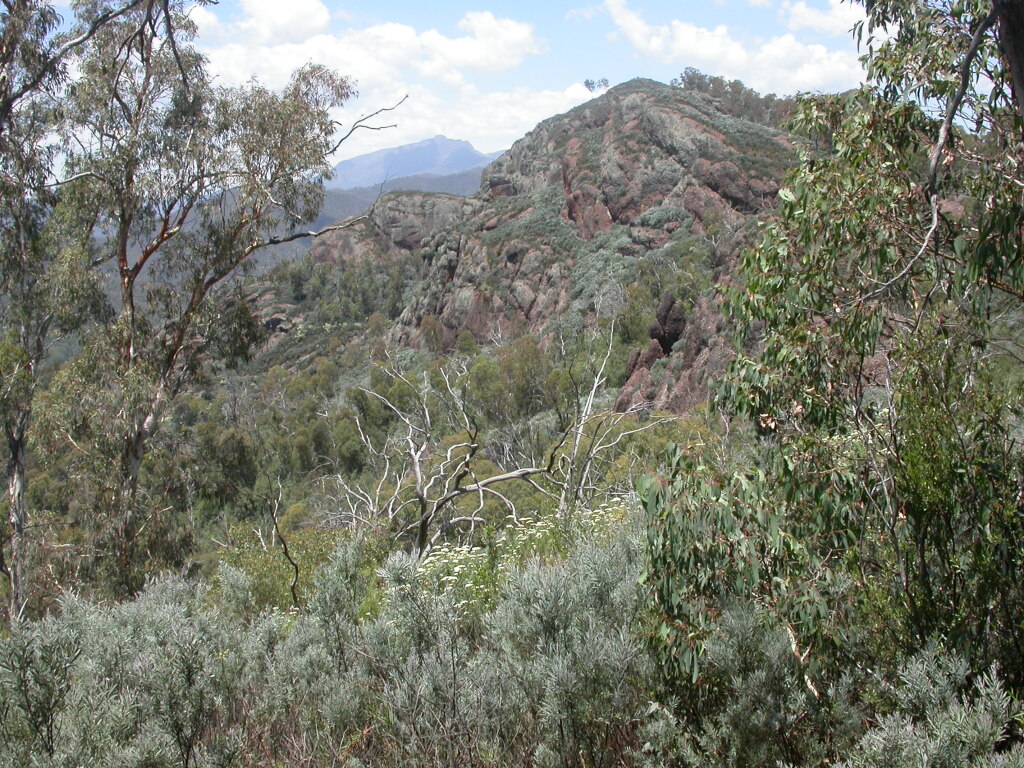Acacia boormanii
MaidenBushy shrub to 4 m high, readily coppicing; branchlets glabrous or sparsely and minutely hirsute, often pruinose at extremities. Phyllodes spreading to erect or deflexed, narrowly linear, c. 3–6 cm long and 1.5–2 mm wide, thin, glabrous except for adaxial side of pulvinus which is often sparsely hairy, green to grey-green, narrowed at base, normally obliquely and eccentrically mucronate; midrib and lateral veins indistinct; gland not prominent, 2–14 mm above pulvinus. Racemes with rachis 1–3 cm long, slender, straight to flexuose, glabrous to subglabrous, often pruinose; peduncles 2–3 mm long, slender, glabrous to subglabrous; heads prolific, globular, 5–10-flowered, golden. Flowers 5-merous; sepals united. Pods linear, to 9 cm long, 4–6 mm wide, firmly chartaceous, dehiscing unilaterally, glabrous; seeds longitudinal, oblong-elliptic, 4.5–5 mm long, somewhat shiny, black, aril half to two-thirds the length of seed. Flowers Aug.–Oct.
VVP, VRiv, GipP, OtP, Gold, CVU, NIS, EGL, EGU, HSF, HNF, MonT. Also NSW. Restricted mostly to open-forest on rocky slopes and along banks of the Snowy River and its tributaries, with outlying populations at Mt Typo and Gapsted in the Mytleford area. Occasionally sparingly established on roadside plantings, for example between Bungal and Mt Egerton.
Plants previously regarded as a slow-growing dwarf variant of this species from the upper catchment of Little River near Wulgulmerang are now regarded to be a distinct species, A. infecunda.
Entwisle, T.J.; Maslin, B.R.; Cowan, R.S.; Court, A.B. (1996). Mimosaceae. In: Walsh, N.G.; Entwisle, T.J., Flora of Victoria Vol. 3, Dicotyledons Winteraceae to Myrtaceae, pp. 585–658. Inkata Press, Melbourne.
 Spinning
Spinning

